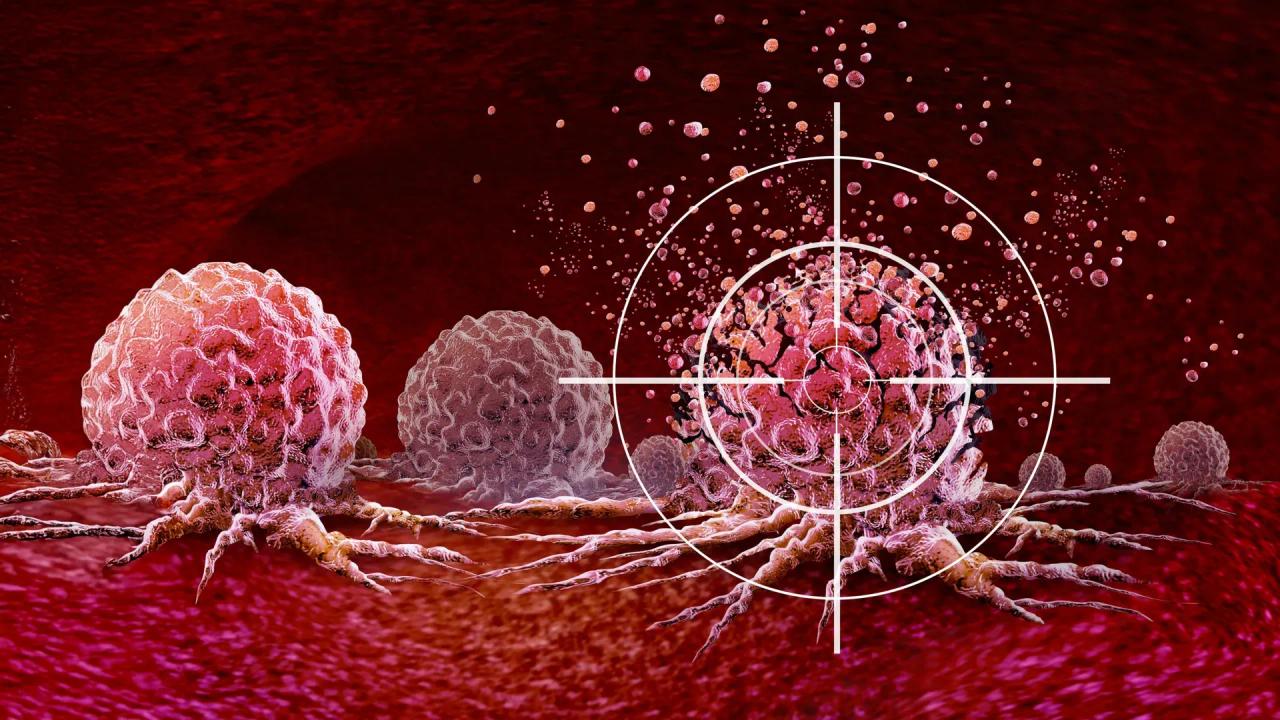AI and Nanomedicine Breakthrough: Detecting Rare Biomarkers for Prostate Cancer and Atherosclerosis
3 Sources
3 Sources
[1]
AI and nanomedicine team up to find rare biomarkers for prostrate cancer and atherosclerosis
Imagine a stadium packed with 75,000 fans, all wearing green and white jerseys -- except one person in a solid green shirt. Finding that person would be tough. That's how hard it is for scientists to find disease markers -- called biomarkers -- in the blood. And instead of one stadium, researchers must search through the equivalent of 100,000 stadiums worth of information. To tackle this challenge, a research team from Michigan State University, working with scientists from Augusta University, Karolinska Institute and Stanford University, used nanomedicine, artificial intelligence, or AI, and a method for studying cause and effect. Their goal was to find rare biomarkers for prostate cancer that has spread, and a condition called atherosclerosis, which causes clogged arteries. Their research findings were recently published in the Chemical Engineering Journal. "Cells affected by disease secrete proteins and other biomolecules into the bloodstream," said Morteza Mahmoudi, associate professor in the Department of Radiology and the Precision Health Program in the MSU College of Human Medicine. "These proteins provide valuable clues about a patient's health status or disease, and they can be collected and studied. Once identified, they pave the way for a significant advancement in the development of personalized medical treatments, or precision medicine." How they made the discovery "Human blood plasma contains many different proteins, and the rarest proteins are the ones that contain valuable insights into diseases," Mahmoudi explained. "To magnify information from the less abundant plasma proteins, we introduced small particles -- nanoparticles that can't be seen with the human eye -- to plasma samples. Then we harnessed AI and actual causality to analyze the results. This is how we identify potential biomarkers for metastatic prostate cancer and atherosclerosis. "It's the first time that nanomedicine, protein corona, AI and actual causality have been used together to identify a cause for disease," he added. "We're excited because this discovery has the potential to advance early detection and develop targeted therapies for prostate cancer and atherosclerosis." MSU researchers Mohammad Ghassemi, Borzoo Bonakdarpour and Liangliang Sun made significant contributions to this research, Mahmoudi said.
[2]
Uncovering hidden disease clues with nanoparticles and AI
Michigan State UniversityJun 24 2025 Imagine Spartan Stadium packed with 75,000 fans, all wearing green and white jerseys - except one person in a solid green shirt. Finding that person would be tough. That's how hard it is for scientists to find disease markers - called biomarkers - in the blood. And instead of one stadium, researchers must search through the equivalent of 100,000 stadiums worth of information. To tackle this challenge, a research team from Michigan State University, working with scientists from Augusta University, Karolinska Institute and Stanford University, used nanomedicine, artificial intelligence, or AI, and a method for studying cause and effect. Their goal was to find rare biomarkers for prostate cancer that has spread, and a condition called atherosclerosis, which causes clogged arteries. Their research findings were recently published in the Chemical Engineering Journal. Cells affected by disease secrete proteins and other biomolecules into the bloodstream. These proteins provide valuable clues about a patient's health status or disease, and they can be collected and studied. Once identified, they pave the way for a significant advancement in the development of personalized medical treatments, or precision medicine." Morteza Mahmoudi, Associate Professor, Department of Radiology and the Precision Health Program in the MSU College of Human Medicine How they made the discovery "Human blood plasma contains many different proteins, and the rarest proteins are the ones that contain valuable insights into diseases," Mahmoudi explained. "To magnify information from the less abundant plasma proteins, we introduced small particles - nanoparticles that can't be seen with the human eye - to plasma samples. Then we harnessed AI and actual causality to analyze the results. This is how we identify potential biomarkers for metastatic prostate cancer and atherosclerosis. "It's the first time that nanomedicine, protein corona, AI and actual causality have been used together to identify a cause for disease," he added. "We're excited because this discovery has the potential to advance early detection and develop targeted therapies for prostate cancer and atherosclerosis." MSU researchers Mohammad Ghassemi, Borzoo Bonakdarpour and Liangliang Sun made significant contributions to this research, Mahmoudi said. Funding sources include the American Heart Association, the U.S. Department of Defense Prostate Cancer Research Program's Physician Research Award, the National Cancer Institute and the National Science Foundation. Michigan State University Journal reference: Guha, A., et al. (2025). AI-driven prediction of cardio-oncology biomarkers through protein corona analysis. Chemical Engineering Journal. doi.org/10.1016/j.cej.2025.161134.
[3]
MSU Researchers Use Nanomedicine and Artificial Intelligence to Diagnose Diseases -- a Biology First | Newswise
Why this matters: Researchers from Michigan State University and their partners have found new biological clues that could help doctors detect prostate cancer and heart disease earlier. This is the first time scientists have used a mix of tiny medical tools, or nanomedicine, artificial intelligence and a method called causal analysis to connect these clues directly to disease. This new diagnostic method has the potential to help millions of Americans. Newswise -- EAST LANSING, Mich. - Imagine Spartan Stadium packed with 75,000 fans, all wearing green and white jerseys -- except one person in a solid green shirt. Finding that person would be tough. That's how hard it is for scientists to find disease markers -- called biomarkers -- in the blood. And instead of one stadium, researchers must search through the equivalent of 100,000 stadiums worth of information. To tackle this challenge, a research team from Michigan State University, working with scientists from Augusta University, Karolinska Institute and Stanford University, used nanomedicine, artificial intelligence, or AI, and a method for studying cause and effect. Their goal was to find rare biomarkers for prostate cancer that has spread, and a condition called atherosclerosis, which causes clogged arteries. Their research findings were recently published in the Chemical Engineering Journal. "Cells affected by disease secrete proteins and other biomolecules into the bloodstream," said Morteza Mahmoudi, associate professor in the Department of Radiology and the Precision Health Program in the MSU College of Human Medicine. "These proteins provide valuable clues about a patient's health status or disease, and they can be collected and studied. Once identified, they pave the way for a significant advancement in the development of personalized medical treatments, or precision medicine." How they made the discovery "Human blood plasma contains many different proteins, and the rarest proteins are the ones that contain valuable insights into diseases," Mahmoudi explained. "To magnify information from the less abundant plasma proteins, we introduced small particles -- nanoparticles that can't be seen with the human eye -- to plasma samples. Then we harnessed AI and actual causality to analyze the results. This is how we identify potential biomarkers for metastatic prostate cancer and atherosclerosis. "It's the first time that nanomedicine, protein corona, AI and actual causality have been used together to identify a cause for disease," he added. "We're excited because this discovery has the potential to advance early detection and develop targeted therapies for prostate cancer and atherosclerosis." MSU researchers Mohammad Ghassemi, Borzoo Bonakdarpour and Liangliang Sun made significant contributions to this research, Mahmoudi said. Funding sources include the American Heart Association, the U.S. Department of Defense Prostate Cancer Research Program's Physician Research Award, the National Cancer Institute and the National Science Foundation. Michigan State University has been advancing the common good with uncommon will for 170 years. One of the world's leading public research universities, MSU pushes the boundaries of discovery to make a better, safer, healthier world for all while providing life-changing opportunities to a diverse and inclusive academic community through more than 400 programs of study in 17 degree-granting colleges. For generations, Spartans have been changing the world through research. Federal funding helps power many of the discoveries that improve lives and keep America at the forefront of innovation and competitiveness. From lifesaving cancer treatments to solutions that advance technology, agriculture, energy and more, MSU researchers work every day to shape a better future for the people of Michigan and beyond. Learn more about MSU's research impact powered by partnership with the federal government.
Share
Share
Copy Link
Researchers from Michigan State University and partners have developed a novel method combining nanomedicine, AI, and causal analysis to identify rare biomarkers for metastatic prostate cancer and atherosclerosis, potentially revolutionizing early disease detection and personalized treatment.
Innovative Approach to Biomarker Detection
Researchers from Michigan State University, in collaboration with scientists from Augusta University, Karolinska Institute, and Stanford University, have developed a groundbreaking method to identify rare biomarkers for metastatic prostate cancer and atherosclerosis. This innovative approach combines nanomedicine, artificial intelligence (AI), and causal analysis to overcome the significant challenge of detecting disease markers in blood samples
1
.The Challenge of Finding Rare Biomarkers
Dr. Morteza Mahmoudi, associate professor in the Department of Radiology and the Precision Health Program at MSU College of Human Medicine, likens the difficulty of finding these biomarkers to locating a single person wearing a solid green shirt in a stadium of 75,000 fans all wearing green and white jerseys. The scale of this challenge is even more daunting, as researchers must search through the equivalent of 100,000 stadiums worth of information
2
.Methodology: Nanoparticles, AI, and Causal Analysis

Source: Phys.org
The research team's methodology involves several key steps:
- Introduction of nanoparticles to blood plasma samples to magnify information from less abundant proteins
- Application of AI and causal analysis to process and interpret the results
- Identification of potential biomarkers for metastatic prostate cancer and atherosclerosis
This marks the first time that nanomedicine, protein corona, AI, and actual causality have been used in combination to identify disease causes
3
.Implications for Precision Medicine
The discovery of these rare biomarkers has significant implications for the advancement of personalized medical treatments, or precision medicine. By identifying proteins and biomolecules secreted by diseased cells into the bloodstream, researchers can gain valuable insights into a patient's health status or disease progression
1
.Potential Impact on Early Detection and Targeted Therapies

Source: News-Medical
Dr. Mahmoudi and his team are optimistic about the potential of this discovery to revolutionize early detection methods and the development of targeted therapies for prostate cancer and atherosclerosis. The ability to identify these rare biomarkers could lead to more accurate diagnoses and more effective, personalized treatment plans
2
.Related Stories
Collaborative Effort and Funding
The research was a collaborative effort, with significant contributions from MSU researchers Mohammad Ghassemi, Borzoo Bonakdarpour, and Liangliang Sun. The study received funding from various sources, including the American Heart Association, the U.S. Department of Defense Prostate Cancer Research Program's Physician Research Award, the National Cancer Institute, and the National Science Foundation
3
.Future Prospects
This innovative approach to biomarker detection represents a significant step forward in the field of diagnostic medicine. As research continues, the combination of nanomedicine, AI, and causal analysis may lead to breakthroughs in the early detection and treatment of various diseases, potentially improving health outcomes for millions of patients worldwide.
References
Summarized by
Navi
[1]
[2]
Related Stories
AI and Advanced Data Metrics Revolutionize Cancer Research and Treatment
18 Jul 2025•Health

AI Breakthrough: PepMLM Targets 'Undruggable' Proteins, Opening New Avenues for Disease Treatment
13 Aug 2025•Science and Research

Deep Nanometry: AI-Powered Nanoparticle Detection Breakthrough for Early Disease Diagnosis
21 Feb 2025•Science and Research

Recent Highlights
1
AI Chatbots Sway Voters More Effectively Than Traditional Political Ads, New Studies Reveal
Science and Research

2
OpenAI declares code red as Google's Gemini 3 gains 200 million users in three months
Technology

3
Trump approves Nvidia H200 chip exports to China with 25% revenue cut, defying Senate concerns
Policy and Regulation





